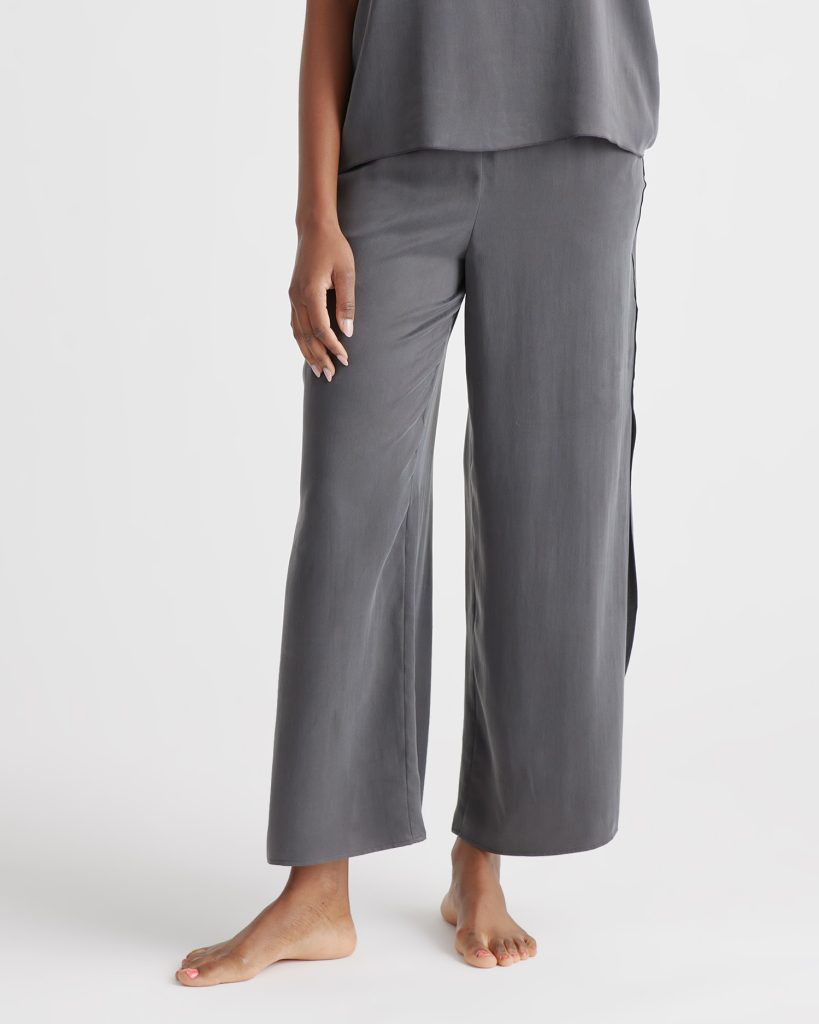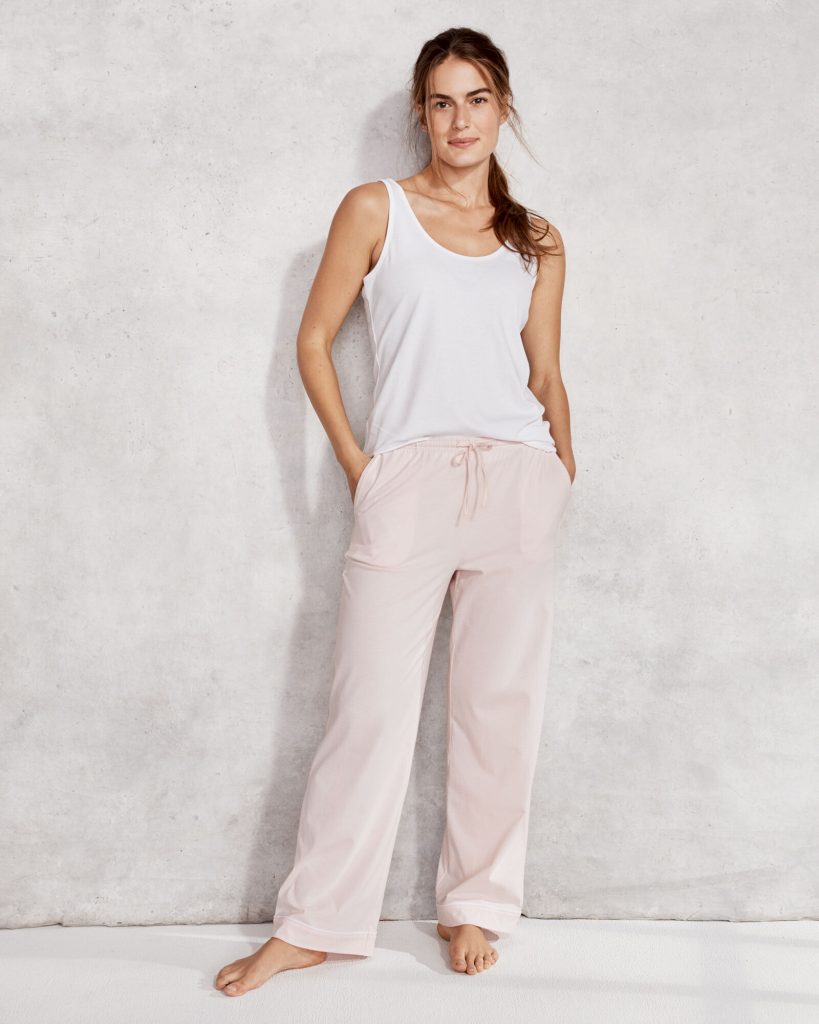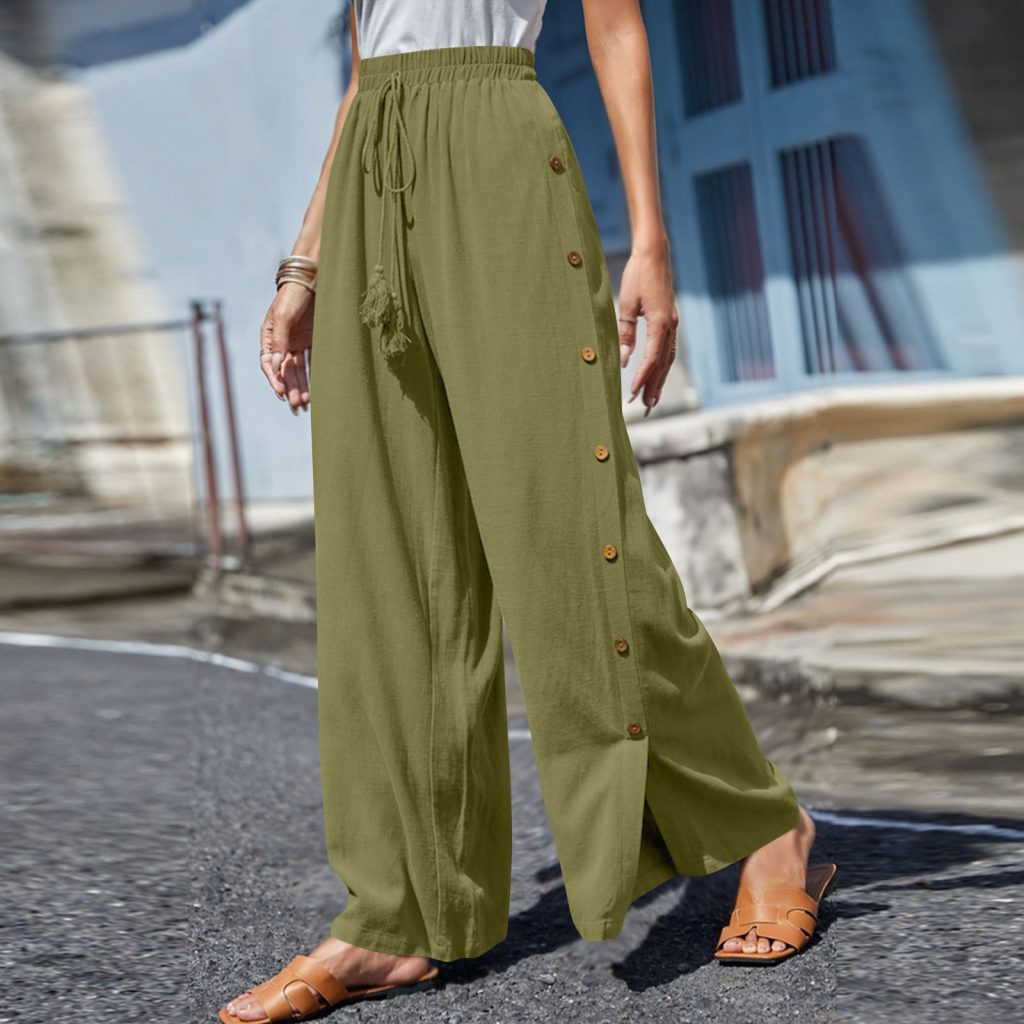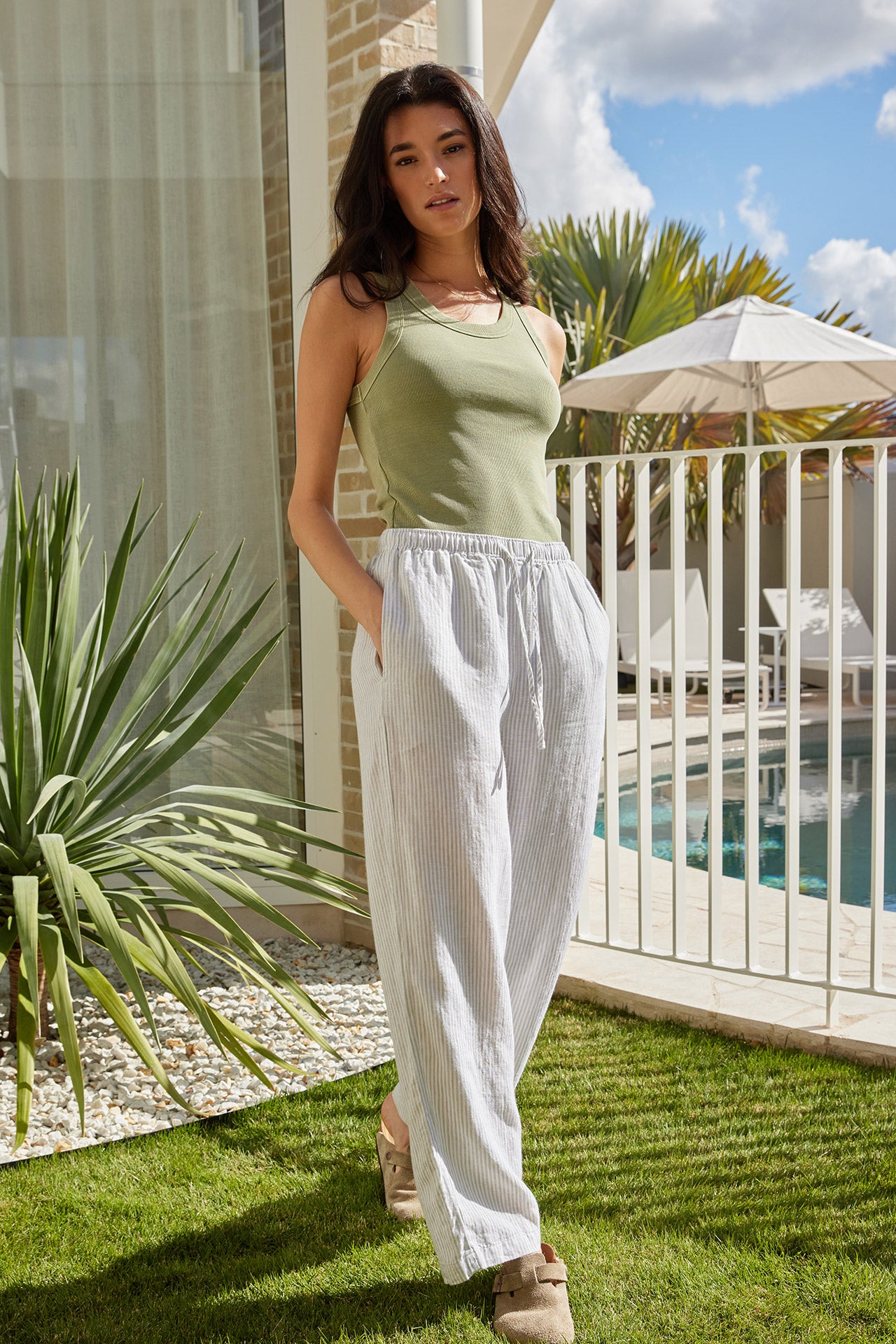How to make pajama pants? Making your own pajama pants is a rewarding and enjoyable sewing project, perfect for beginners and experienced sewists alike. Pajama pants are comfortable, versatile, and can be customized to fit your style. This guide will walk you through every step of the process, from selecting materials to finishing touches.

Materials and Tools Needed
Fabric Selection
Choosing the right fabric is crucial for making comfortable tighten pants. The ideal fabrics for pajama pants include:
- Cotton: Breathable and easy to work with, cotton is a popular choice.
- Flannel: Soft and warm, great for colder climates.
- Jersey Knit: Stretchy and comfortable, though slightly more challenging to sew.
Tools and Supplies
Before you begin, gather the following tools and supplies:
- Fabric (2-3 yards, depending on size)
- Elastic (1-inch wide)
- Matching Thread
- Sewing Machine
- Scissors or Rotary Cutter
- Pins or Clips
- Measuring Tape
- Iron and Ironing Board
- Pattern Paper (or use existing pajama pants as a template)
Step-by-Step Instructions
Preparing the Pattern
You can either purchase a pajama pants pattern or create your own using an existing pair of pajama pants.
Using Existing Pajama Pants:
- Fold the Pants: Take a pair of pajama pants that fit well and fold them in half lengthwise.
- Trace the Outline: Place the folded pants on pattern paper and trace around them, adding a 1/2 inch seam allowance around the edges and an additional 1 inch at the top for the waistband.
- Cut Out the Pattern: Cut out the pattern pieces for both the front and back legs.

Cutting the Fabric
- Lay Out the Fabric: Fold your fabric in half widthwise with the right sides facing each other.
- Pin the Pattern: Pin the pattern pieces to the fabric, ensuring that the fabric grain runs parallel to the pattern’s direction.
- Cut the Fabric: Using scissors or a rotary cutter, cut around the pattern pieces.
Sewing the Pants
Sewing the Leg Seams
- Pin the Legs: With right sides together, pin the front and back leg pieces together along the inseam.
- Sew the Inseam: Sew along the inseam using a straight stitch and a 1/2 inch seam allowance. Repeat for the other leg.
- Finish the Seams: Use a zigzag stitch or serger to finish the raw edges and prevent fraying.
Sewing the Crotch Seam
- Match the Legs: Turn one leg right side out and place it inside the other leg, aligning the crotch seams.
- Pin and Sew: Pin the crotch seam and sew it using a straight stitch and a 1/2 inch seam allowance. Finish the raw edges with a zigzag stitch or serger.
Adding the Waistband
- Create the Waistband Casing: Fold the top edge of the wide leg pants down by 1/4 inch and press with an iron. Then fold it down again by 1 inch and press.
- Sew the Casing: Sew around the folded edge, leaving a 2-inch opening to insert the elastic.
- Insert the Elastic: Attach a safety pin to one end of the elastic and thread it through the casing.
- Join the Ends: Overlap the ends of the elastic by 1 inch and sew them together securely.
- Close the Opening: Sew the opening closed, ensuring the elastic is evenly distributed.
Hemming the Pants
- Measure and Press: Try on the pants and determine the desired length. Fold the bottom edge up by 1/4 inch and press, then fold it up again by 1/2 inch and press.
- Sew the Hem: Sew around the folded edge using a straight stitch.

Finishing Touches
Final Press
Give your pajama pants a final press with the iron to smooth out any wrinkles and set the seams.
Optional Pockets
If you’d like to add pockets, cut out four pocket pieces from the fabric and attach them to the side seams before sewing the legs together.
Decorative Elements
Consider adding decorative elements such as lace trim, piping, or embroidery to personalize your linen pants.
Tips for Success
Fit and Comfort
- Adjusting the Fit: If the pants are too loose or tight, adjust the side seams to achieve a better fit.
- Elastic Comfort: Ensure the elastic waistband is snug but not too tight for maximum comfort.
Working with Different Fabrics
- Stretch Fabrics: When working with stretch fabrics like jersey knit, use a ballpoint needle and a stretch stitch or zigzag stitch.
- Handling Flannel: Pre-wash flannel fabric to prevent shrinkage and handle with care to avoid fraying.
Sewing Techniques
- Seam Finishing: Always finish your seams to prevent fraying and extend the life of your pajama pants.
- Pressing: Press seams as you sew to create a professional-looking finish.
What are the styles of pajama pants
Pajama pants come in a variety of styles, catering to different preferences and fashion trends. Whether you prefer classic and straightforward designs or opt for more unique and trendy options, there is a wide range of choices available.
Classic Straight-Leg Pants:
One of the most common and timeless styles of pajama pants is the classic straight-leg design. These pants feature a straight cut from the waist to the hem, providing a comfortable and relaxed fit. The simplicity of this style makes it versatile and suitable for various fabric choices, from cozy flannel to lightweight cotton.

Wide-Leg Palazzo Pants:
For those who prefer a more flowy and dramatic look, wide-leg palazzo pants are a fantastic choice. These pants have a loose and wide leg, creating a breezy and elegant silhouette. They are ideal for lightweight fabrics with beautiful drape, such as silk or rayon, ensuring optimum comfort and style.
Tapered or Skinny Pants:
If you prefer a more fitted and tailored look, consider making tapered or skinny pajama pants. These pants have a narrower leg, gradually tapering towards the ankle. This style elongates the legs and adds a modern touch to your sleepwear. Choose stretchy fabrics like jersey or knit for a comfortable fit that allows ease of movement.
Capri or Cropped Pants:
Capri or cropped pajama pants are perfect for warmer weather or for individuals who prefer shorter inseam lengths. These pants typically end at or below the knee, providing a more relaxed and casual feel. Depending on your preference, you can opt for a straight or wide-leg design for your capri pants for added versatility.
Flared or Bell Bottom Pants:
For a retro-inspired look, flared or bell bottom pajama pants are an excellent choice. These pants have a fitted thigh area that gradually widens from the knee down. This style adds a touch of fun and nostalgia to your sleepwear. Choose fabrics with a bit of weight and structure, such as denim or cotton twill, to enhance the flare effect.
Printed or Patterned Pants:
In addition to different cuts and styles, consider experimenting with various prints and patterns for your pajama pants. Whether it’s floral motifs, playful polka dots, or bold geometric designs, adding prints to your sleepwear can elevate your style and reflect your personality. Keep in mind that when sewing printed pants, pattern matching is crucial for a polished finished piece.

Conclusion
Making your own pajama pants is a fun and practical sewing project that allows you to customize your sleepwear to your liking. By following this step-by-step guide, you’ll end up with a cozy and stylish pair of pajama pants that you can proudly say you made yourself. Happy sewing!
Tags: Pants